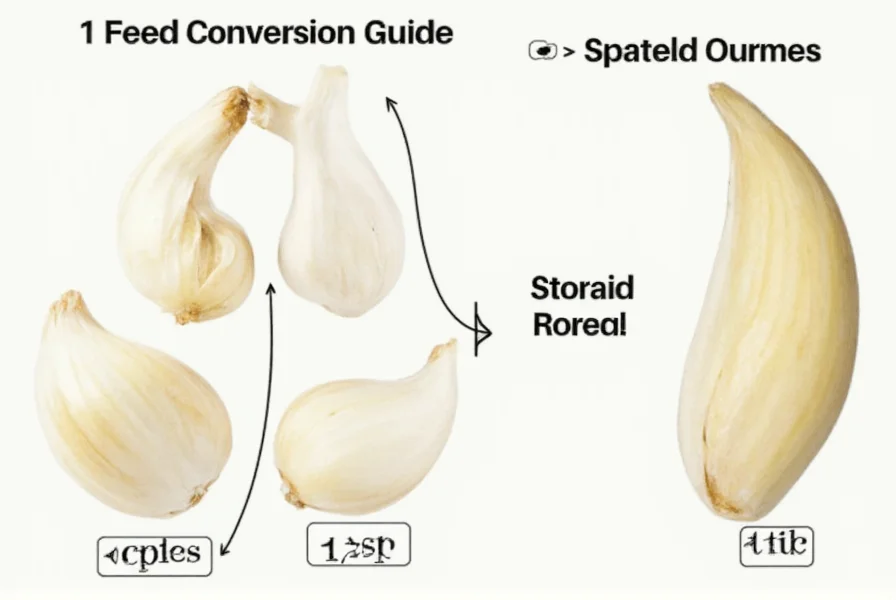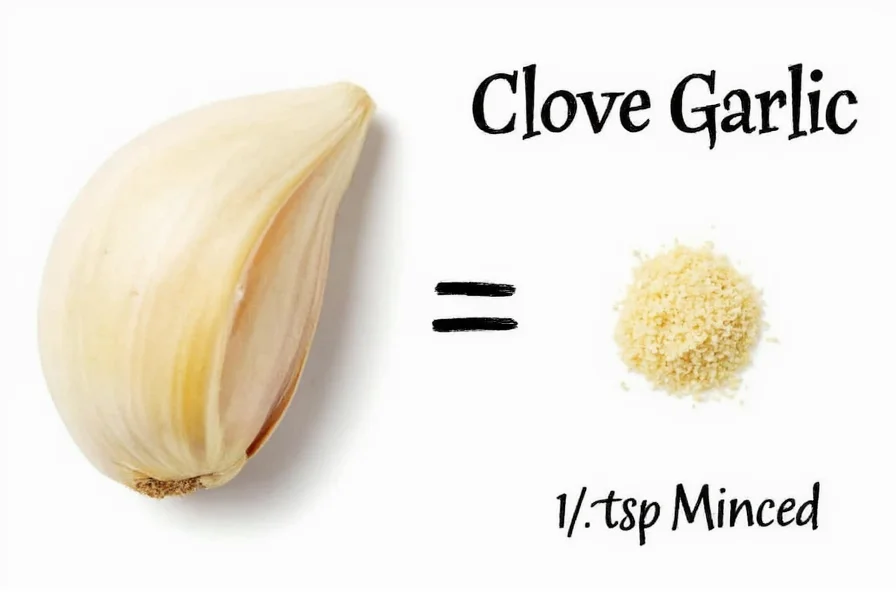When converting fresh garlic cloves to minced measurements, size matters. Garlic cloves vary significantly in size, affecting the exact teaspoon equivalent. This guide provides accurate conversions for home cooks and professional chefs who need reliable measurements for consistent results.
Garlic Clove to Teaspoon Conversion Explained
The standard conversion assumes a medium-sized garlic clove (about 1 inch long and 3/4 inch in diameter). However, garlic size can vary dramatically based on variety and growing conditions. Using the wrong measurement can lead to under-seasoned or overpowering dishes.
| Garlic Clove Size | Whole Clove Weight | Minced Garlic Equivalent |
|---|---|---|
| Small | 3-5 grams | 1/4 teaspoon |
| Medium (standard) | 6-9 grams | 1/2 teaspoon |
| Large | 10-14 grams | 3/4 teaspoon |
| Jumbo | 15+ grams | 1 teaspoon |
Factors Affecting Garlic Measurement Accuracy
Several variables influence the precise conversion from whole cloves to minced measurements:
Clove Size Variations
Garlic bulbs contain cloves of different sizes. The outer cloves tend to be larger than inner ones. When recipes specify "one clove," they typically mean a medium clove unless otherwise noted.
Preparation Method
How you mince garlic affects volume. Hand-minced garlic typically yields slightly less volume than food processor minced due to differences in particle size. For the most accurate measurement:
- Measure after mincing, not before
- Pack minced garlic lightly into the measuring spoon
- Avoid pressing down, which extracts juice and reduces volume

Practical Cooking Applications
Understanding garlic conversions becomes crucial in specific cooking scenarios:
When Precision Matters Most
Certain dishes require exact garlic measurements to achieve proper flavor balance:
- Vinaigrettes and delicate sauces
- Garlic-infused oils
- Raw applications like aioli or pesto
- Preserves and pickling solutions
When Approximation Works
For heartier dishes with longer cooking times, slight variations matter less:
- Stews and braises
- Roasted vegetable preparations
- Tomato-based pasta sauces
- Meat marinades with extended resting time

Substituting Minced Garlic Products
Not all minced garlic comes from fresh cloves. Commercial products vary significantly:
- Freshly minced (homemade): 1 medium clove = 1/2 tsp
- Pre-minced (jarred): 1/2 tsp = 1 medium clove, but often contains preservatives that slightly alter flavor
- Garlic paste: More concentrated; use 1/3 tsp per clove
- Dried garlic flakes: 1/8 tsp = 1 medium clove (reconstitutes to about 1/4 tsp)
For best results in how many teaspoons is one garlic clove minced conversions, always use fresh garlic when possible. The enzymatic reaction that occurs when garlic is crushed creates superior flavor compounds compared to pre-minced alternatives.
Professional Chef Tips for Garlic Measurement
Seasoned chefs employ several techniques for accurate garlic measurement:
- The Water Test: Place minced garlic in a measuring spoon and add water to the line - the garlic will settle to its true volume
- Weight-Based Measurement: Use a kitchen scale (6-9g per medium clove)
- Visual Reference: A medium minced clove should fill half a standard teaspoon without mounding
- Adjust for Age: Older garlic cloves contain less moisture, so you may need slightly more volume
Understanding the garlic clove to teaspoon conversion chart helps prevent common cooking mistakes. Many home cooks underestimate how potent minced garlic can be compared to whole cloves, leading to overpowering dishes. When in doubt, start with less - you can always add more garlic during cooking, but you can't remove it once added.
FAQ: Common Garlic Measurement Questions
How many teaspoons of minced garlic equals one large clove?
One large garlic clove (approximately 1 inch long and 1 inch in diameter) equals about 3/4 teaspoon of freshly minced garlic. Large cloves typically weigh 10-14 grams before mincing.
Can I substitute jarred minced garlic for fresh cloves using the same conversion?
While the volume conversion (1 clove = 1/2 tsp) remains similar, jarred minced garlic often contains preservatives and has a slightly different flavor profile. Use 10-15% less jarred garlic than fresh to account for flavor differences when following a minced garlic equivalent to fresh garlic clove conversion.
Why does my recipe call for minced garlic instead of whole cloves?
Recipes specify minced garlic when even flavor distribution is critical. Minced garlic releases flavor compounds more quickly and evenly than whole cloves, which is essential for sauces, dressings, and dishes with shorter cooking times. Understanding how much minced garlic equals one clove in recipes ensures proper seasoning.
Does roasting garlic change the teaspoon conversion?
Roasting concentrates garlic flavor while reducing volume. One roasted medium clove yields about 1/3 teaspoon of soft, caramelized garlic. For roasted garlic applications, use a 1:1 substitution by taste rather than volume, as the flavor profile changes significantly during roasting.
How can I quickly mince garlic without special equipment?
To mince garlic quickly: 1) Remove peel and smash clove with flat side of knife, 2) Sprinkle with pinch of salt, 3) Rock knife blade repeatedly over garlic until finely minced. The salt helps break down fibers and prevents sticking. This method yields properly textured minced garlic for accurate garlic clove to teaspoon conversion chart measurements.










 浙公网安备
33010002000092号
浙公网安备
33010002000092号 浙B2-20120091-4
浙B2-20120091-4